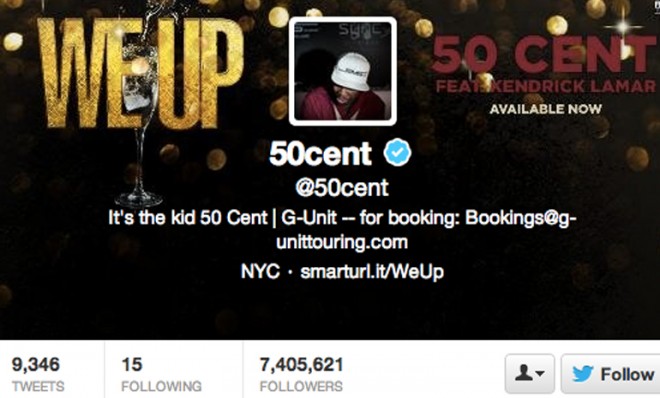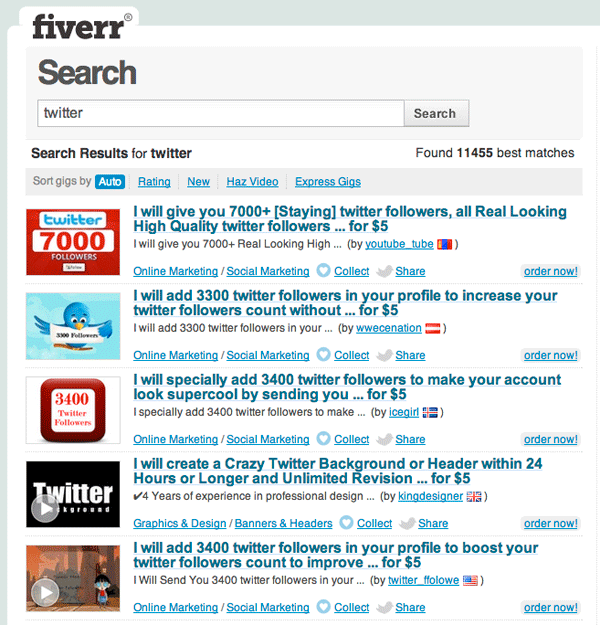How celebrities buy Twitter followings — and how you can, too
50 Cent, Mercedes-Benz, and Pepsi may all have falsely inflated follower accounts

What do Newt Gingrich, Russian Prime Minister Dmitry Medvedev, Louis Vuitton, and Diddy all have in common? According to a social media watchdog group, they all may have bought their way to Twitter fame, purchasing small armies of followers to boost their digital profiles.
A report in the New York Times takes a look at the murky weirdness of Twitter and Facebook's fake follower problem. Brands, celebrities, and regular ol' you can purchase hundreds — even thousands — of Twitter followers for the right price.
Now, I know what you're thinking: Why would anyone do such a thing?
The Week
Escape your echo chamber. Get the facts behind the news, plus analysis from multiple perspectives.

Sign up for The Week's Free Newsletters
From our morning news briefing to a weekly Good News Newsletter, get the best of The Week delivered directly to your inbox.
From our morning news briefing to a weekly Good News Newsletter, get the best of The Week delivered directly to your inbox.
"For some people, it simply feeds the ego," says the Times' Nicole Perlroth. "For people and brands, a large Twitter following or Facebook fan base helps increase their visibility. If followers are constantly clicking on links to a brand’s landing page, it also lifts the brand's position in Google's search results."
According to Altimeter Group, which has been tracking the activity of high-profile accounts, it's all about generating buzz. But as anyone with an inkling of marketing know-how will tell you, quantity doesn't necessarily equate quality — especially when the followers in question, well, aren't real.
Take the Twitter account of Rep. Jared Polis (D-Colo.), which, for two years, was gaining an average of 15 new followers every day. Then last July, his account exploded with 19,705 new Twitter users, mostly egg avatars. One day a few months later, 13,000 of his followers suddenly evaporated, likely a zap-job by the Twitter mothership.
"Many brands struggle to measure the top line value of social media," Susan Etlinger, an analyst with Altimeter Group, tells the Times. "So there is a thirst to show momentum in different ways, one of which is to show that the brand has a bigger audience today than it did yesterday."
A free daily email with the biggest news stories of the day – and the best features from TheWeek.com
So how exactly does one build a fake online following? If you're so inclined, you can head over to websites like Fiverr, which functions as a digital billboard for dubious online services. For $5, you can purchase anything from 200 Facebook "likes" to 10,500 "REAL looking Twitter followers."

As Gizmodo notes, writing a script that will add thousands of bots to an account doesn't take any technological wizardry, either. As a "reputable hacker friend" explains it:
Generally they use compromised accounts or create them in batches with some kind of captcha bypassing exploits, or by simply creating a bunch of accounts, manually filling those captchas.
But yeah, mostly compromised twitter accounts acquired with botnets, they run a script to make those accounts to follow the profile in question... Nothing complicated really. [Gizmodo]
For the average user, falsely inflating your follower count is more of a vanity project than anything. It's not technically illegal, either — it's just kind of sad. As Mary C. Long at Mediabistro's All Twitter blog notes, "You're a fraud," for starters, and more importantly, possessing an account loaded with dubious #SocialMediaMavens, Beliebers, and sexbots is an obvious "credibility killer."
And on Twitter, where information flies fast and furious, credibility is the one of the rare currencies still worth valuing. Buyer beware.


